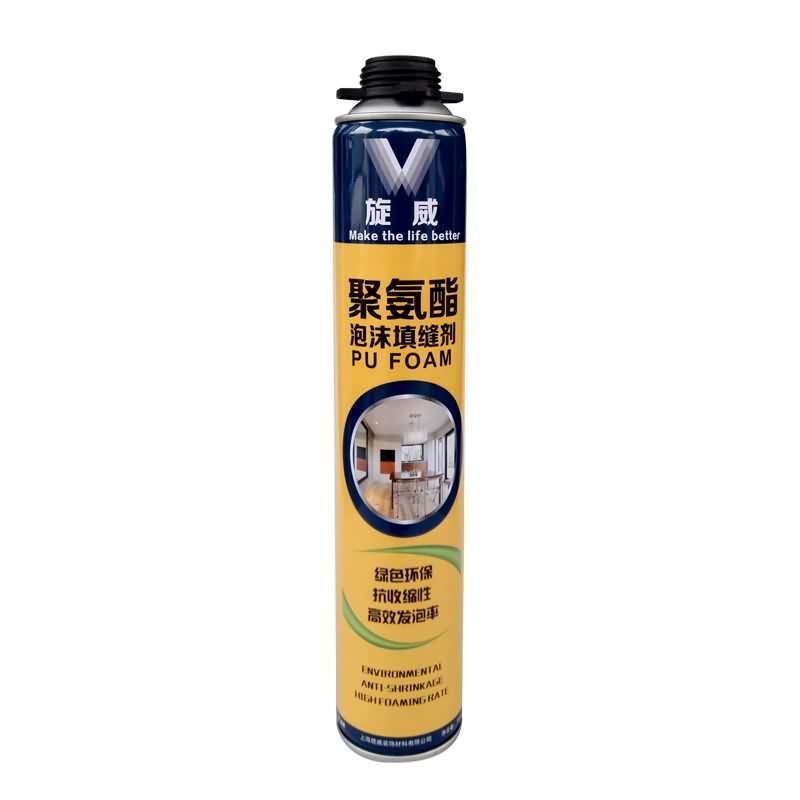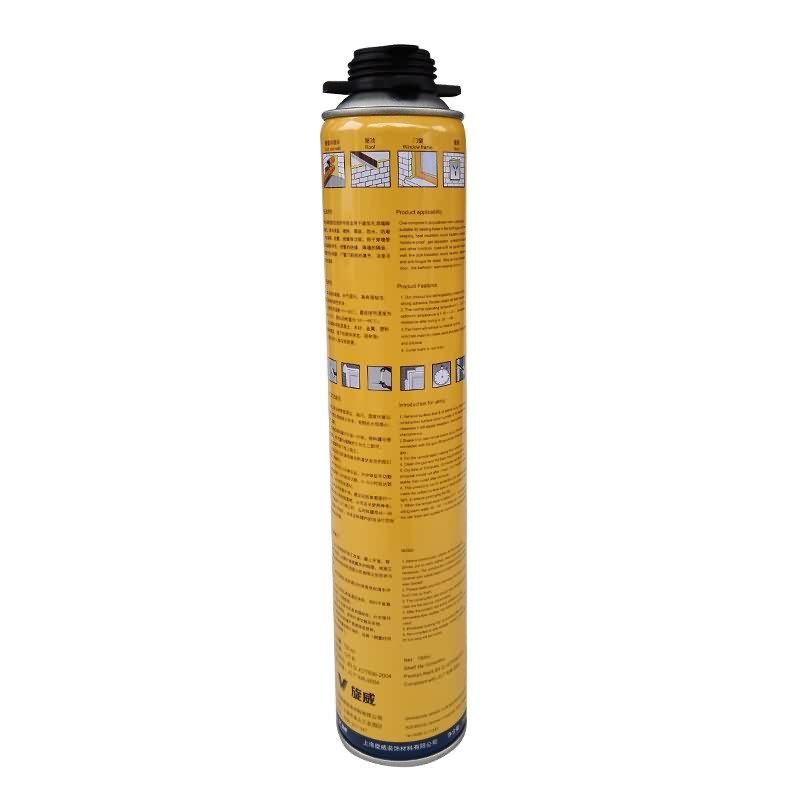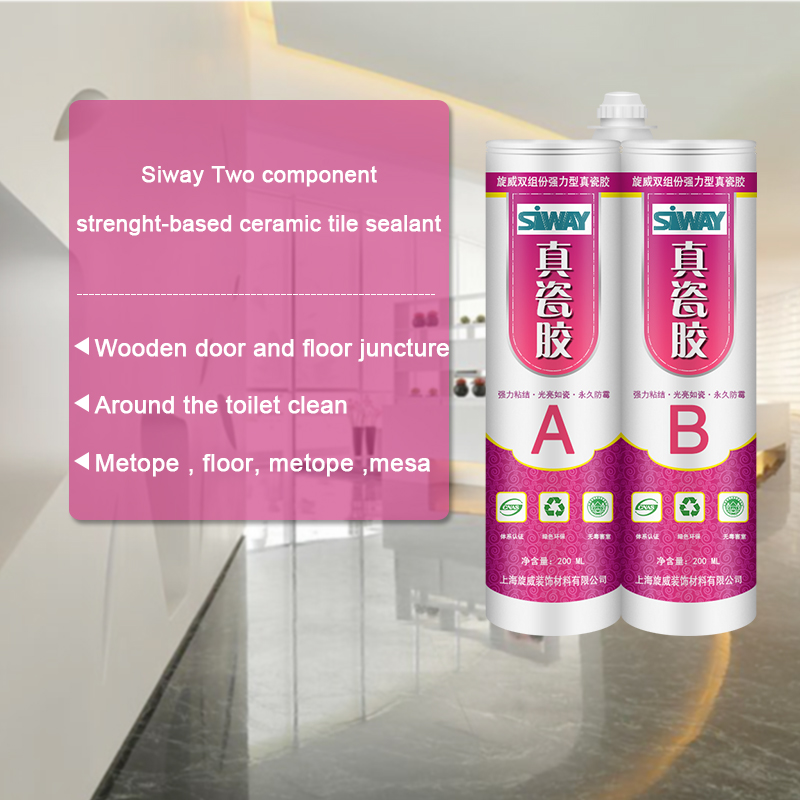2 Years\’ Warranty for Siway PU FOAM Export to UK
Short Description:
Description This product is the expansion, moisture curing, has the strong cohesiveness, elastic foam obturator structure; Save work to save time, reduce waste; High bond strength; Bubble can stick in the concrete, wood, metal, plastic, such as base material surface, but not including teflon, silicon resins; Key Features 1. Noise silencing effect 2. Strong bonding strength 3. Water & weatherproof 4. Primerless adhesion to most building materials Basic Application 1.Doors and Windows a...
Our team through professional training. Skilled professional knowledge, strong sense of service, to meet the service needs of customers for 2 Years\’ Warranty for Siway PU FOAM Export to UK, We warmly welcome business partners from all walks of life, expect to establish friendly and cooperative business contact with you and achieve a win-win goal.
Description
This product is the expansion, moisture curing, has the strong cohesiveness, elastic foam obturator structure; Save work to save time, reduce waste; High bond strength;
Bubble can stick in the concrete, wood, metal, plastic, such as base material surface, but not including teflon, silicon resins;
Key Features
1. Noise silencing effect
2. Strong bonding strength
3. Water & weatherproof
4. Primerless adhesion to most building materials
Basic Application
1.Doors and Windows and wall body between the gap filling sealing, fixed bond
2.Language lab, studio, etc when decorating, gap to fill
Technical data sheet
|
Project |
Value |
||
|
Density, Kg/m³,Not less |
10 |
||
|
Thermal conductivity,35℃,W/(m·K) no more than |
0.050 |
||
|
Dimensional stability(23±2)℃,48,h no more than |
5 |
||
|
Operating temperature |
-10~+35℃ |
||
|
Optimum operating temperature |
+18~+25℃ |
||
|
Temperature range(After curing) |
-35~+80℃ |
||
|
Tensile bond strength kPa Not less |
Aluminum plate |
Standard condition,7d |
80 |
|
Immersion,7d |
60 |
||
|
PVC plate |
Standard condition,7d |
80 |
|
|
Immersion,7d |
60 |
||
|
Cement Plate |
Standard condition,7d |
60 |
|
|
Shear strength,kpa,Not less |
80 |
||
|
Foam expansion ratio,Not less |
Standard value-10 |
||
Certification
JC 936-2004
Color
White
Package
750ml in Bottle * 12 per box
Shelf life
12 months
Note
If you want the TDS or MSDS or other details, please contact with our sales person.
Behold The Future…Hydrogel superglue is 90 percent water, New “water adhesive” is tougher than natural adhesives employed by mussels and barnacles.
Nature has developed innovative ways to solve a sticky challenge: Mussels and barnacles stubbornly glue themselves to cliff faces, ship hulls, and even the skin of whales. Likewise, tendons and cartilage stick to bone with incredible robustness, giving animals flexibility and agility.
The natural adhesive in all these cases is hydrogel — a sticky mix of water and gummy material that creates a tough and durable bond.
Now engineers at MIT have developed a method to make synthetic, sticky hydrogel that is more than 90 percent water. The hydrogel, which is a transparent, rubber-like material, can adhere to surfaces such as glass, silicon, ceramics, aluminum, and titanium with a toughness comparable to the bond between tendon and cartilage on bone.
In experiments to demonstrate its robustness, the researchers applied a small square of their hydrogel between two plates of glass, from which they then suspended a 55-pound weight. They also glued the hydrogel to a silicon wafer, which they then smashed with a hammer. While the silicon shattered, its pieces remained stuck in place.
Such durability makes the hydrogel an ideal candidate for protective coatings on underwater surfaces such as boats and submarines. As the hydrogel is biocompatible, it may also be suitable for a range of health-related applications, such as biomedical coatings for catheters and sensors implanted in the body.
“You can imagine new applications with this very robust, adhesive, yet soft material,” says Xuanhe Zhao, the Robert N. Noyce Career Development Associate Professor in MIT’s Department of Mechanical Engineering. For example, Zhao’s group is currently exploring uses for the hydrogel in soft robotics, where the material may serve as synthetic tendon and cartilage, or in flexible joints.
“It’s a pretty tough and adhesive gel that’s mostly water,” Hyunwoo Yuk, a graduate student in mechanical engineering and the lead author of a paper on the work, says. “Basically, it’s tough, bonding water.”
Zhao and his students publish their results today in the journal Nature Materials.
A stretchy anchor…
A tough, flexible hydrogel that bonds strongly requires two characteristics, Zhao found: energy dissipation and chemical anchorage. A hydrogel that dissipates energy is essentially able to stretch significantly without retaining all the energy used to stretch it. A chemically anchored hydrogel adheres to a surface by covalently bonding its polymer network to that surface.
“Chemical anchorage plus bulk dissipation leads to tough bonding,” Zhao says. “Tendons and cartilage harness these, so we’re really learning this principle from nature.”
In developing the hydrogel, Yuk mixed a solution of water with a dissipative ingredient to create a stretchy, rubbery material. He then placed the hydrogel atop various surfaces, such as aluminum, ceramic, glass, and titanium, each modified with functional silanes — molecules that created chemical links between each surface and its hydrogel.
The researchers then tested the hydrogel’s bond using a standard peeling test, in which they measured the force required to peel the hydrogel from a surface. On average, they found the hydrogel’s bond was as tough as 1,000 joules per square meter — about the same level as tendon and cartilage on bone.
Zhao group compared these results with existing hydrogels, as well as elastomers, tissue adhesives, and nanoparticle gels, and found that the new hydrogel adhesive has both higher water content and a much stronger bonding ability.
“We basically broke a world record in bonding toughness of hydrogels, and it was inspired by nature,” Yuk says.
https://news.mit.edu/2015/hydrogel-superglue-water-adhesive-1109
———————————————————————————————————–
Newly engineered water superglue (MIT Video)







